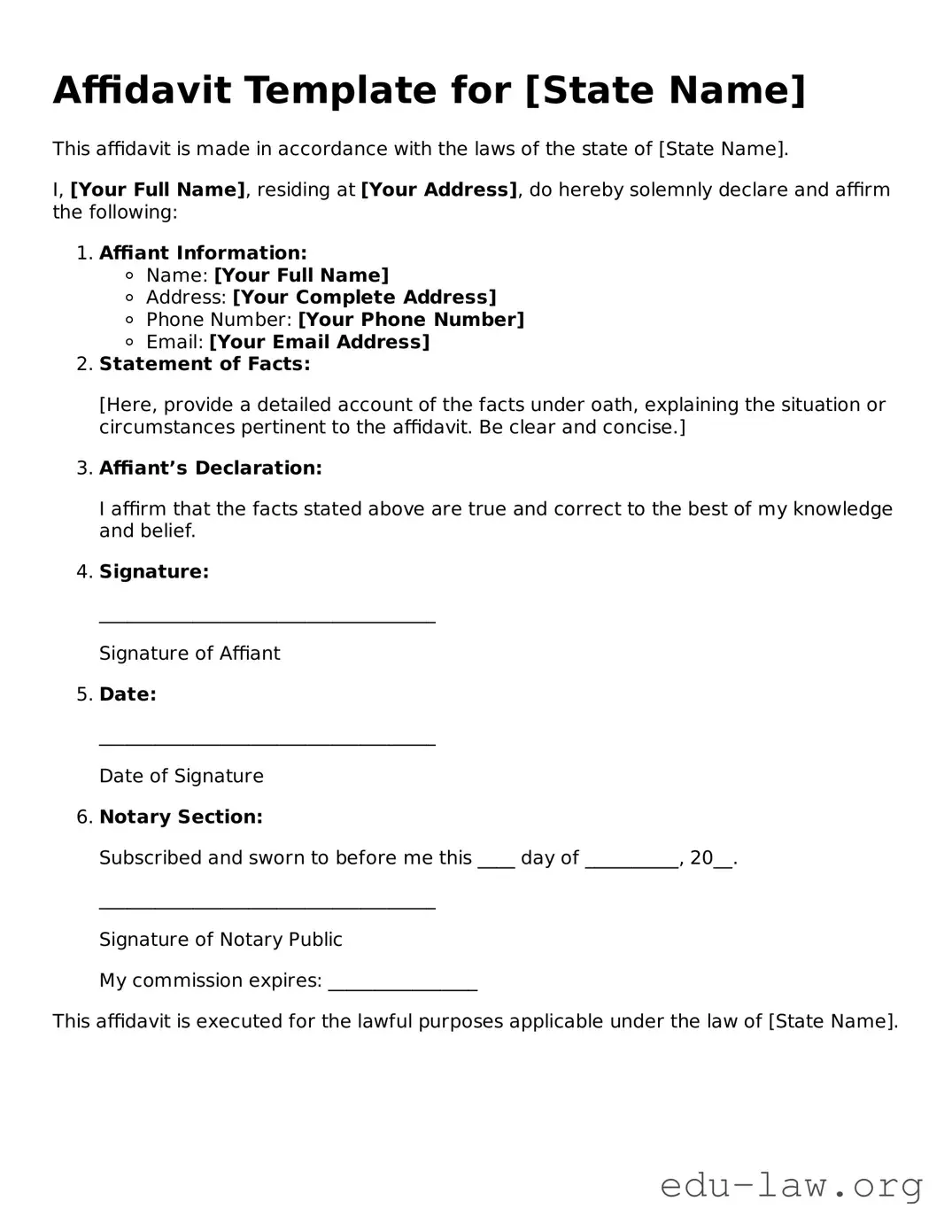What is an Affidavit?
An affidavit is a written statement that is sworn to be true by the person making it, known as the affiant. It serves as a legal document that can be used in court or in various legal proceedings to present facts and evidence. Affidavits are commonly used for matters such as identity verification, property issues, or any situation where a witness's statement is required.
How do I complete an Affidavit form?
To complete an affidavit form, begin by entering your name and address at the top of the document. Next, clearly state the facts you wish to present. Use concise and straightforward language. Include each fact in separate paragraphs, if necessary. At the end, you will need to sign the document in front of a notary public or other authorized official who can verify your identity and witness your signature.
Do I need a notary public to sign my Affidavit?
Yes, most states require affidavits to be notarized for them to be legally binding. A notary public will confirm your identity and witness your signing of the document. This step adds a level of authenticity and can help prevent fraud. Always check the specific requirements in your state, as they may vary.
Where can I use an Affidavit?
An affidavit can be used in various contexts, including court cases, real estate transactions, and business agreements. They often serve as evidence to support claims or statements made in legal matters. If you need it for a specific purpose, ensure the affidavit is tailored to meet the requirements of that situation.
What happens if I lie in an Affidavit?
Lying in an affidavit is considered perjury, which is a serious offense. If you provide false information, you may face legal consequences, including fines or imprisonment. Always ensure that the information you provide is accurate and truthful, as the affidavit is a legally binding document.
